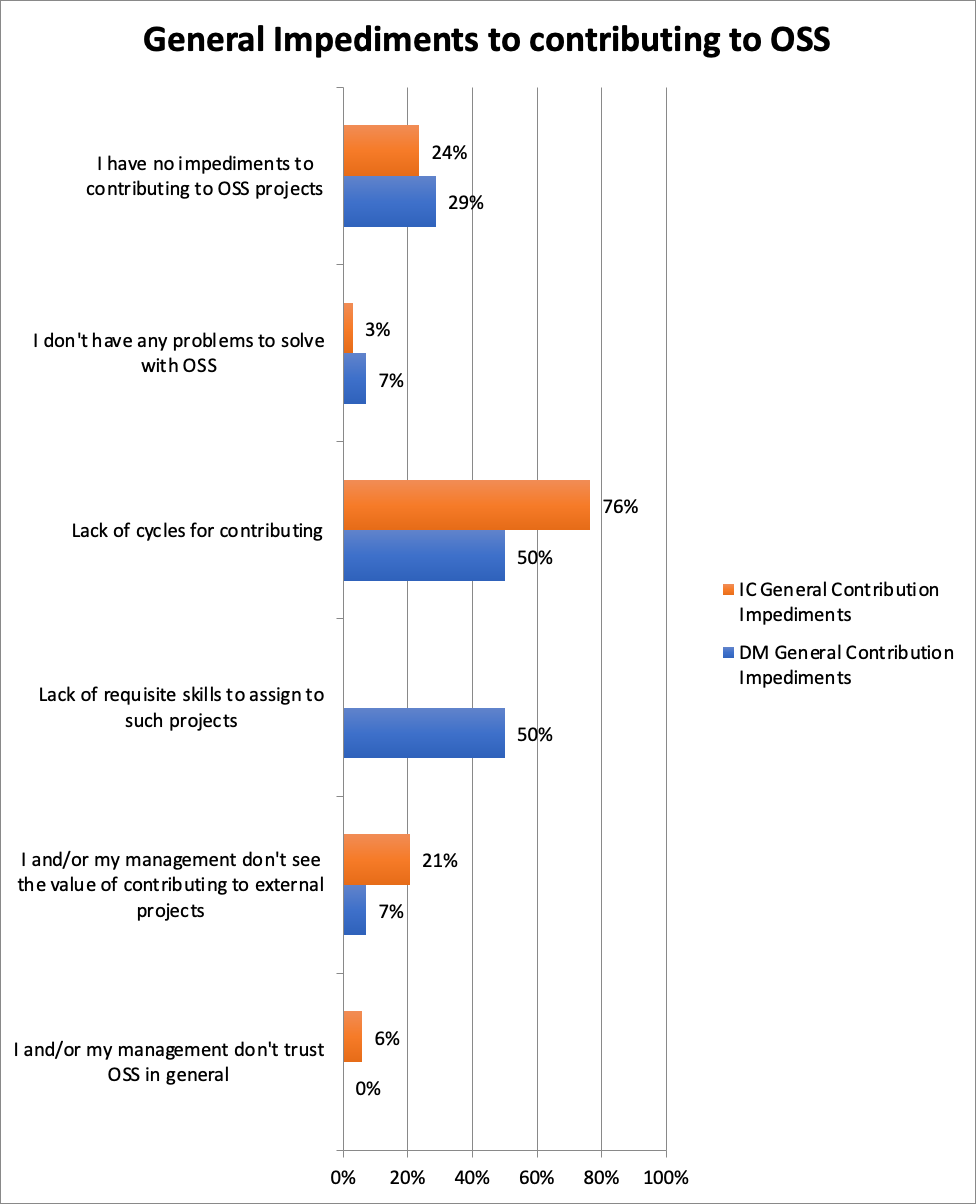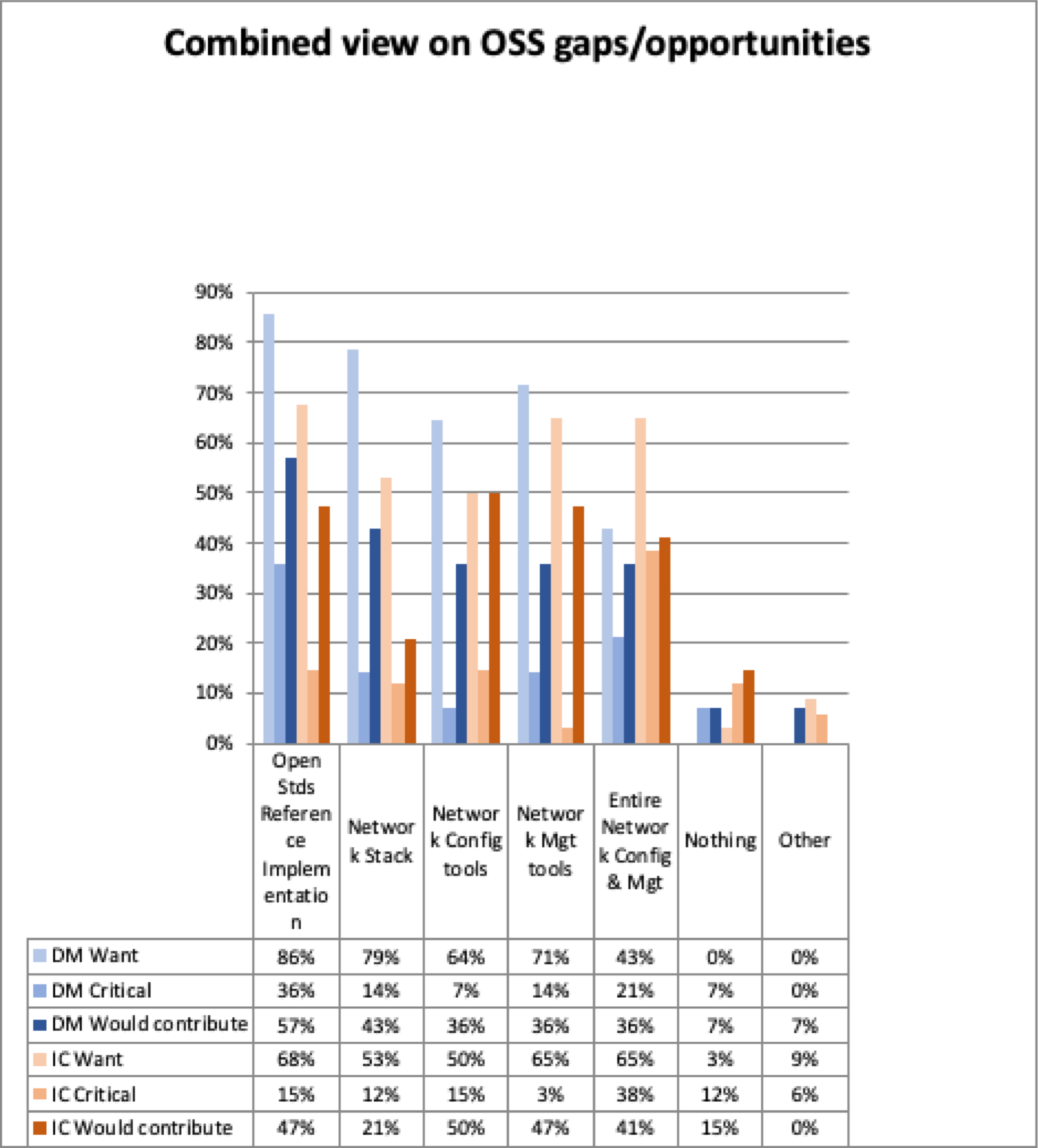Network Operators and Open Source Software Study
Executive Summary
Leslie Daigle
December 2020
This document is one subsection of the Network Operators and Open Source Software project report. Full report available from https://possie.techark.org/
Key findings from the Network Operator OSS study
Increasingly,[1] open source software (OSS) is important to network operators of all types. Interests vary, perhaps stemming from a desire to reduce dependency on any single hardware vendor (by having vendor-neutral software), a preference to be able to examine the source code for independent security review, or something completely different.
By the very nature of OSS development, engagement is essential to ensure that the software delivered fulfills an actual need and is useful in an operational context. However, while it is clear that hardware vendors are engaging in community open source projects to serve networking needs, such as those at the Linux Foundation Networking effort[2], it is less evident whether network operators are engaged in developing the very open source software of which they are targeted to be consumers.
This project canvassed network operators (individual contributors (IC) and decision makers (DM)) to gather information about their stance towards OSS, with a view to understanding what might increase operator engagement, and where current OSS efforts might be falling short of network operator needs.
The full results from the project (questionnaire and pilot development project) reveal many interesting findings. The three key takeaways can be summarized as follows.
Why don’t network operators contribute to OSS development in their own interests?
The top reason cited for not contributing was a lack of available resources (personnel cycles). This was especially notable from the decision maker respondents (76%), although it was also a clear message from individual contributors (50%).
Individual contributors also cited a lack of requisite skills as a major impediment.
Notably, most respondents did not select answers to say they had no use for OSS or failed to see any value in contributing to external projects.

Chart KeyFindings-1
What’s missing in the OSS landscape?
Respondents most strongly supported “Open standards reference implementations” as a gap in the OSS landscape (86% of decision makers and 68% of individual contributors selected it).
Importantly, roughly 50% (combined) would contribute to projects to address the perceived lack of OSS open standards reference implementations
Decision makers and individual contributors had differing perspectives on what was the second most important OSS gap

Chart KeyFindings-2
Can we address these issues through collaborative open source development?
The pilot project component of the project, which focused on taking an existing set of collaborating network operators with an identified tool need, revealed one important lesson: for success of collaborative open source software projects, an active organizer is necessary, but not sufficient. A successful project must also have identified coding resources (either committed from participants, or provided by the platform) in order to make progress.
Full report available at https://possie.techark.org
Leslie Daigle
December 2020
Full report available from https://possie.techark.org/
[1] https://inform.tmforum.org/features-and-analysis/2015/09/three-reasons-why-open-source-software-is-good-for-network-operators/
[2] https://www.lfnetworking.org/ June 2020, asserts: “9 of 10 Top open source networking projects are hosted at The Linux Foundation; 10 largest
Networking vendors are active Linux Foundation members”